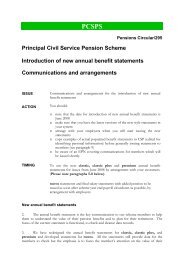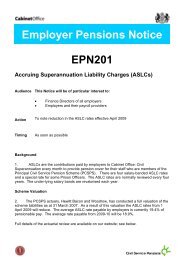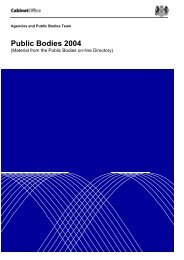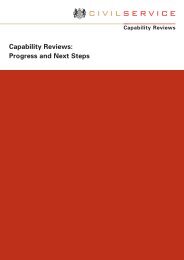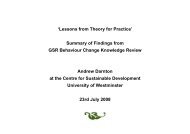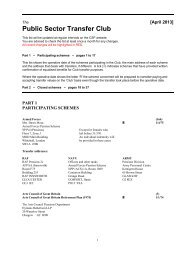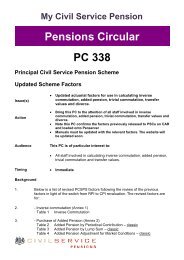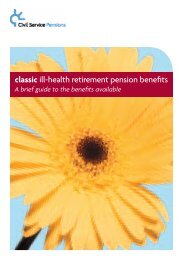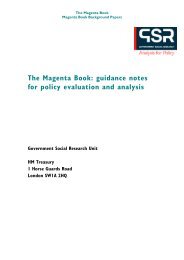Making Car Sharing and Car Clubs Work - Case ... - The Civil Service
Making Car Sharing and Car Clubs Work - Case ... - The Civil Service
Making Car Sharing and Car Clubs Work - Case ... - The Civil Service
Create successful ePaper yourself
Turn your PDF publications into a flip-book with our unique Google optimized e-Paper software.
MAKING CAR SHARING AND CAR CLUBS WORKCASE STUDY SUMMARIES18.49 Members were keen to see car clubs in the UK develop along similar lines to those inEurope, with the option to use a car club car at either end of a long distance journey or whilston holiday in another area.Discussion of the Issues18.50 Ourcaryourcar has reduced the number of car journey miles each member makes per week<strong>and</strong>, in the case of the members who were interviewed, reduced their household expenditureon transport, <strong>and</strong> particularly their expenditure on the private car. <strong>The</strong>se changes arebeneficial to the individuals, <strong>and</strong> if replicated across the country they have the potential to bebeneficial to the community, in terms of reducing car parking pressure, traffic congestion,<strong>and</strong> pollution levels, whilst increasing disposable incomes in families.18.51 <strong>The</strong>y have not, however, resulted in the development of a sustainable business model forrural car clubs.18.52 As members have to pay individually for each journey they make by private car, they onlyuse the car for essential journeys that cannot be made by other means or are extremelyinconvenient to make using public transport. <strong>The</strong>refore the number of journeys car clubmembers make by car is far smaller than the number of journeys made by car owners. Witha relatively low membership per car (about 8 members per car), the result is a low level ofutilisation of car club cars in the Colne Valley.18.53 It is well known that car owners rarely consider the real costs of owning <strong>and</strong> running theircar, referring instead to petrol costs, or at most, to petrol, insurance <strong>and</strong> car tax costs. <strong>The</strong>ytend to ignore repairs, depreciation, servicing, maintenance, garaging <strong>and</strong> parking costs.This makes potential car club members baulk at annual membership fees <strong>and</strong> what they atfirst perceive to be the high hourly <strong>and</strong> mileage rates. <strong>The</strong>se charges are in fact set at anextremely low level, when considering the level of service available in the Colne Valley:three different car types are availableutilisation rates are so low, that even when they make a last-minute booking, users arerarely unable to book the car of their choice.18.54 Ourcaryourcar is currently operating as though it is a mutual organisation, in other words, agroup of people have come together to arrange to purchase goods or services jointly <strong>and</strong>share the benefits of those goods or services. At present the members are not taking on anyof the risks of purchase, nor are they sharing the actual costs of providing the service. Ineffect, the service they are using is being subsidised by fund-raising <strong>and</strong> grants.18.55 In Colne Valley, at local <strong>and</strong> neighbourhood level, the organisation <strong>and</strong> communicationwithin the user group <strong>and</strong> with the community is excellent. <strong>The</strong> paradox is that this is notleading to sufficient activity or utilisation of the vehicles to make the Club financially viable inthe long term.18.56 Ourcaryourcar’s options for survival include:Final V1.1, Dec. 2004 - 106 -




